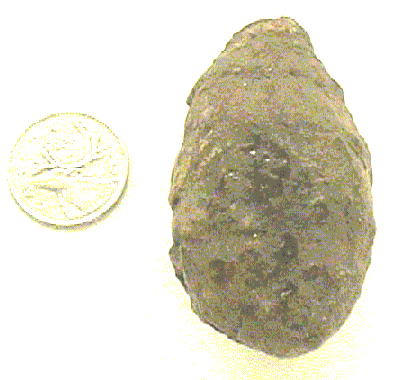
NMC 40752 *
In sedimentology, there are cases where sediments contain a huge amount of
coprolites. These "coprogenic sediments" are common in marine environments, and are
often the result of benthic organisms producing vast amounts of fine-grained
excrement. For example, the Pelecypod Mytilus yields huge amounts of coprogenic
mud, which completely surrounds it's biotope in tidal flats.
However, if these coprogenic muds are not held together very well, wave
action and currents will easily destroy them. On the other hand, if the muds are
held together quite strongly they will form compact layers. Also to be considered are ellipsoidal fecal pellets produced by other benthic organisms, because they too will form
layers of there own. This combination of ellipsoidal pellets and coprogenic muds are
frequently found in the troughs of ripple marks in marine environments, or on muddy or
sandy tidal flats.

These layers can be found in the neritic and even the abyssal. They are
common in the recent, but such layers have also been found in the ancient. For example,
an ancient layer was found in the Maestrichtian Stage in the Upper Cretaceous, in the
Netherlands.
| Back |  |
Next |